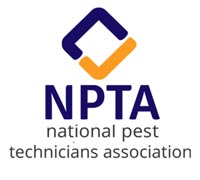While it’s important to protect your home from harmful pests, it’s equally important to protect your pet from potential harm associated with pest control products.
Nobody wants to put their pets at risk when dealing with controlling unwanted pests.
Understanding the Risks of Pest Control to Pets
Pest control Hastings products are designed and engineered to minimise the risk of harm, but there are still potential risks that need to be taken into consideration.
In particular, pest control Hastings products can contain toxic chemicals and some animals may be more sensitive to the chemicals than humans. When using pest control products, you should
- always read the label and follow all instructions carefully to ensure that your pet is not exposed to any potentially dangerous chemicals.
Additionally, it is important to
- keep your pet away from any areas where pest control products have been sprayed, as the residue may linger for some time and can cause harm if ingested.
Lastly, it is a good idea to
- consult with your veterinarian if you have any questions or concerns about the safety of pest control products for your pet. By understanding the risks of pest control and taking proper precautions, we can all protect our beloved pets from potential harm.
By educating ourselves on all of the possible risks associated with pest control, we can take appropriate steps to protect our pets from any potential harms related to pest control products. Pest control Hastings services are available to help identify and address any pest problems that may exist in any property. Pest control Hastings have a wide range of products available for treating different types of pests in various environments, and it is important to make sure that we select the safest and most responsible option for our home.
Best Practices for Ensuring Pet Safety During Pest Control
When performing pest control services, it is important to ensure the safety of any pets in the home or facility.
First, it is essential to ask the homeowner or facility manager about any animals present. Then, the pest control team should make sure to use baits and traps that are pet safe. Additionally, any chemicals or insecticides used should be kept away from pets and not sprayed near them. It is also important to consider the age of the pet and whether they should be relocated to another area while treatment is underway.
By taking these steps, pest control professionals can offer effective services while keeping pets safe.
If moving pets isn’t an option, then make sure to provide a safe area away from any pest control treatments for them to remain in during treatment.

